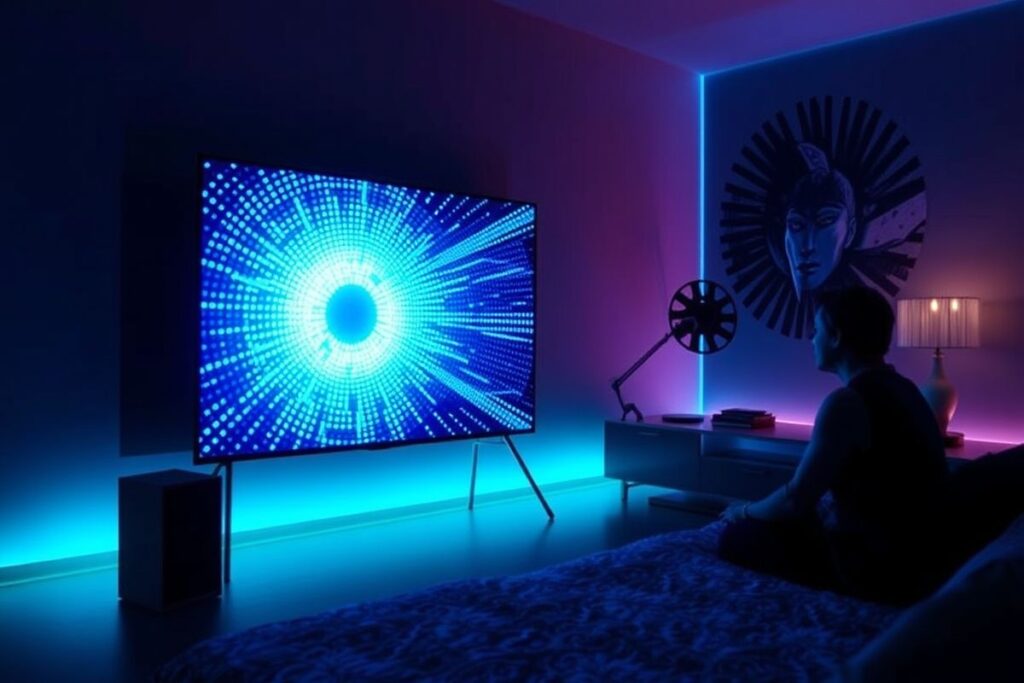Dive into the vibrant world of quantum dot technology and uncover the secrets behind its transformative impact on television displays. These tiny semiconductor nanocrystals are revolutionizing how we experience color, brightness, and overall picture quality. This isn’t just an incremental upgrade; it’s a leap forward in visual fidelity. Prepare to be amazed as we delve into the ten key insights that unlock the true potential of quantum dots and explain why they are setting a new standard for TV excellence.

Unveiling the Quantum Dot Advantage
Enhanced Color Accuracy and Vibrancy
Quantum dots are the masters of color precision. Unlike traditional LCDs that rely on broad-spectrum white backlights and color filters, quantum dots emit light at very specific wavelengths. This precision translates to purer, more saturated colors, covering a significantly wider color gamut. The result? Images that burst with lifelike vibrancy and breathtaking realism.
Imagine a sunset with fiery oranges and deep reds, or a lush forest teeming with vibrant greens. Quantum dots capture these nuances with incredible accuracy, bringing a new level of immersion to your viewing experience. They paint a picture that is closer to what the human eye perceives in the real world, making on-screen content truly captivating.
This superior color performance is not just a visual treat; it’s a game-changer for content creators. Filmmakers and game developers can now express their artistic vision with unprecedented accuracy, knowing that the colors they intend will be faithfully reproduced on quantum dot-enhanced screens.
Improved Brightness and Contrast
Quantum dots aren’t just about color; they significantly enhance brightness and contrast as well. By emitting light more efficiently, they contribute to brighter highlights and deeper blacks, creating a more dynamic and engaging image. This improved contrast ratio allows for greater detail in both bright and dark scenes, revealing subtle nuances that would be lost on conventional displays.
The impact is particularly noticeable in HDR (High Dynamic Range) content. Quantum dots excel at reproducing the expanded brightness range of HDR, showcasing the full spectrum of light and shadow intended by the creators. This results in a more realistic and immersive viewing experience, bringing you closer to the action than ever before.
Furthermore, the enhanced brightness of quantum dot displays makes them ideal for brightly lit environments. Even in rooms with ample natural light, the picture remains vibrant and clear, ensuring a consistently high-quality viewing experience regardless of ambient conditions.
The Science Behind the Spectacle
Understanding Quantum Dot Nanocrystals
So, what exactly are these miraculous quantum dots? They are tiny semiconductor nanocrystals, typically made of cadmium selenide or indium phosphide. Their size, measured in nanometers (billionths of a meter), determines the wavelength of light they emit. Smaller dots emit bluer light, while larger dots emit redder light. By precisely controlling the size of these nanocrystals, manufacturers can fine-tune the color output of the display.
This precise control over light emission is what sets quantum dots apart from traditional phosphors used in older display technologies. Phosphors emit light across a broader range of wavelengths, resulting in less saturated colors. Quantum dots, with their narrow emission bands, deliver a level of color purity that was previously unattainable.
The nanocrystals are typically embedded in a film or layer within the display structure, where they are excited by a blue LED backlight. The quantum dots then emit light at their specific wavelengths, contributing to the overall color and brightness of the image.
Different Quantum Dot Implementation Methods
There are several ways to integrate quantum dots into a TV display. One common method is using a quantum dot enhancement film (QDEF) placed between the backlight and the LCD panel. This film contains the quantum dots that convert the blue backlight into a wider spectrum of colors.
Another approach is to incorporate the quantum dots directly into the LCD panel’s color filter layer. This method, known as photo-emissive quantum dots, offers even greater color precision and efficiency.
Each implementation method has its own advantages and disadvantages in terms of cost, performance, and manufacturing complexity. As technology evolves, we can expect further refinements in quantum dot implementation, leading to even more impressive display capabilities.

Leave a Reply